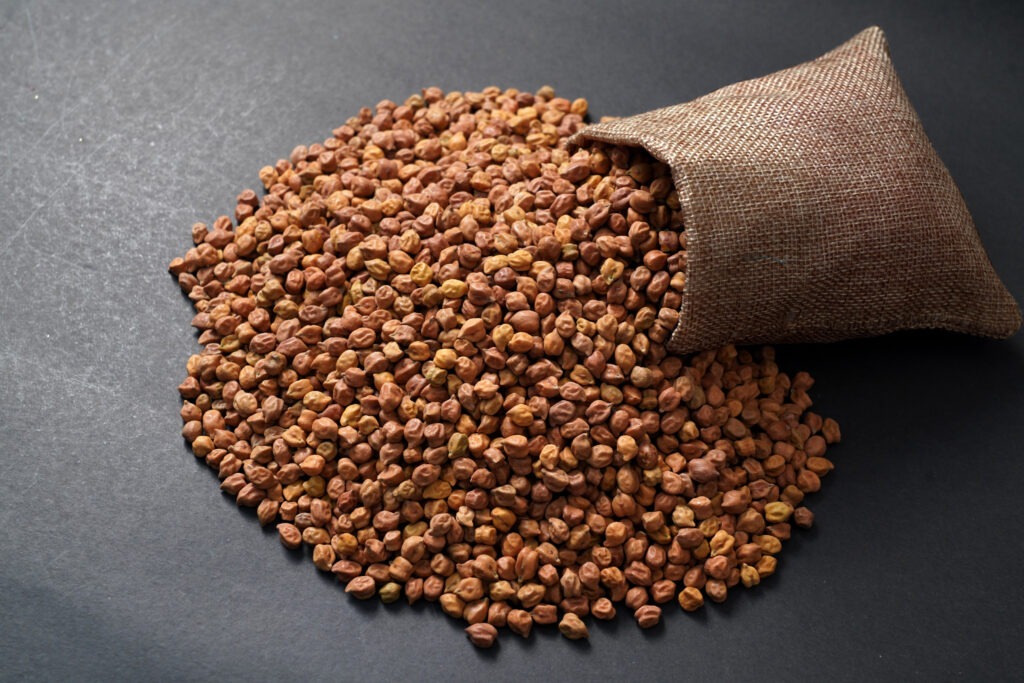Summary
Desi chickpea prices have staged a modest recovery this week, climbing $10 per tonne as Australian inventories tighten and demand remains steady. While this uptick has sparked speculation about prices potentially reaching ₹70,000 ($820) per tonne, market fundamentals suggest limited upward momentum. Multiple factors including expected Australian harvest yields, declining yellow pea prices, and competitive African pigeon pea offerings are likely to cap significant price spikes in the near term.
Desi Chickpea Market Dynamics: A Cautious Recovery
The pulse trading market witnessed an interesting development this week as desi chickpeas prices rebounded by $10 per tonne. This recovery comes primarily due to low inventory levels in Australia, combined with modest but consistent demand from key importing nations.
Currently trading at ₹58,000 ($678) per tonne in India, the commodity price analysis suggests we may see a reversal of the recent bearish trend. Industry experts anticipate prices could climb to ₹65,000 ($760) per tonne as the festival season approaches in late July, traditionally a period of increased consumption.
Global Food Supply Factors Limiting Price Growth
Despite the recent uptick, several agricultural commodities market factors are expected to prevent dramatic price increases:
Australian Production Outlook: Early indicators suggest Australia may harvest another strong desi chickpea crop this year, which would help stabilize global food supply chains and prevent excessive price volatility.
Yellow Pea Competition: The continued decline in yellow pea prices globally poses a significant challenge. Canada has reduced its yellow pea offers to India to $420 per tonne and to China at $365. Russia and Ukraine are even more competitive, offering yellow peas to India and Pakistan at $355 per tonne and to China at $345 for August delivery.
African Alternative Sources: African nations are providing strong competition in the pulse segment. Mozambique is offering pigeon peas at $575 per tonne, Tanzania at $700, and Malawi at $550 per tonne - all significantly lower than Myanmar's $725 quote for August delivery.
Pulse Trading Market: Current Price Positioning
The pulse trading market is showing clear geographical price differentiation:
- Australia: Raised offers to $700/tonne for August delivery
- Pakistan deliveries: $690 for July
- UAE deliveries: $705 for July
- November-December Australian offers: $560/tonne (currently no takers)
Agricultural Commodities Policy Impact
A crucial factor constraining price growth is the Indian government's decision to allow duty-free imports of yellow peas until March 31, 2026. This policy significantly impacts desi chickpeas prices as traders estimate that at least one-third of chickpea demand can be substituted with yellow peas.
Inventory Analysis: Supply Chain Considerations
Current inventory levels paint a complex picture for commodity price analysis:
- NAFED holdings: Approximately 250,000 tonnes (down from over 1 million tonnes last year)
- Port warehouses: Around 500,000 tonnes of desi chickpeas
- Trader inventories: Significantly low due to liquidity constraints
- Previous year comparison: 600,000 tonnes carryover stocks versus current reduced levels
The reduction in trader inventories is particularly noteworthy, as many are facing losses and lack the buying power for forward trading. This liquidity crunch in the trading community could paradoxically support prices in the short term while limiting market activity.
Market Outlook: Balanced Expectations
While the recent price recovery in desi chickpeas prices offers some optimism, the agricultural commodities market outlook remains cautiously balanced. The combination of:
- Expected good Australian harvest
- Competitive pricing from alternative pulse sources
- Government policy supporting yellow pea imports
- Limited trader liquidity
These factors collectively suggest that while modest price increases are possible, dramatic spikes are unlikely unless significant weather events or geopolitical developments alter the current market dynamics.
Conclusion
The recent rebound in desi chickpeas prices reflects the complex interplay of supply chain dynamics in the global food supply market. While current fundamentals support a modest recovery toward ₹65,000 per tonne during the festival season, structural factors including Australian production capacity, competitive alternative sources, and policy frameworks are likely to prevent excessive price volatility.
For traders and food processors, this environment presents opportunities for strategic procurement while maintaining cost efficiency. The pulse trading market continues to demonstrate the importance of diversified sourcing strategies and real-time market intelligence in navigating these evolving commodity landscapes.
As the agricultural commodities sector becomes increasingly interconnected, platforms like Hectar's AI-driven market analysis become essential tools for making informed trading decisions in this dynamic environment.
